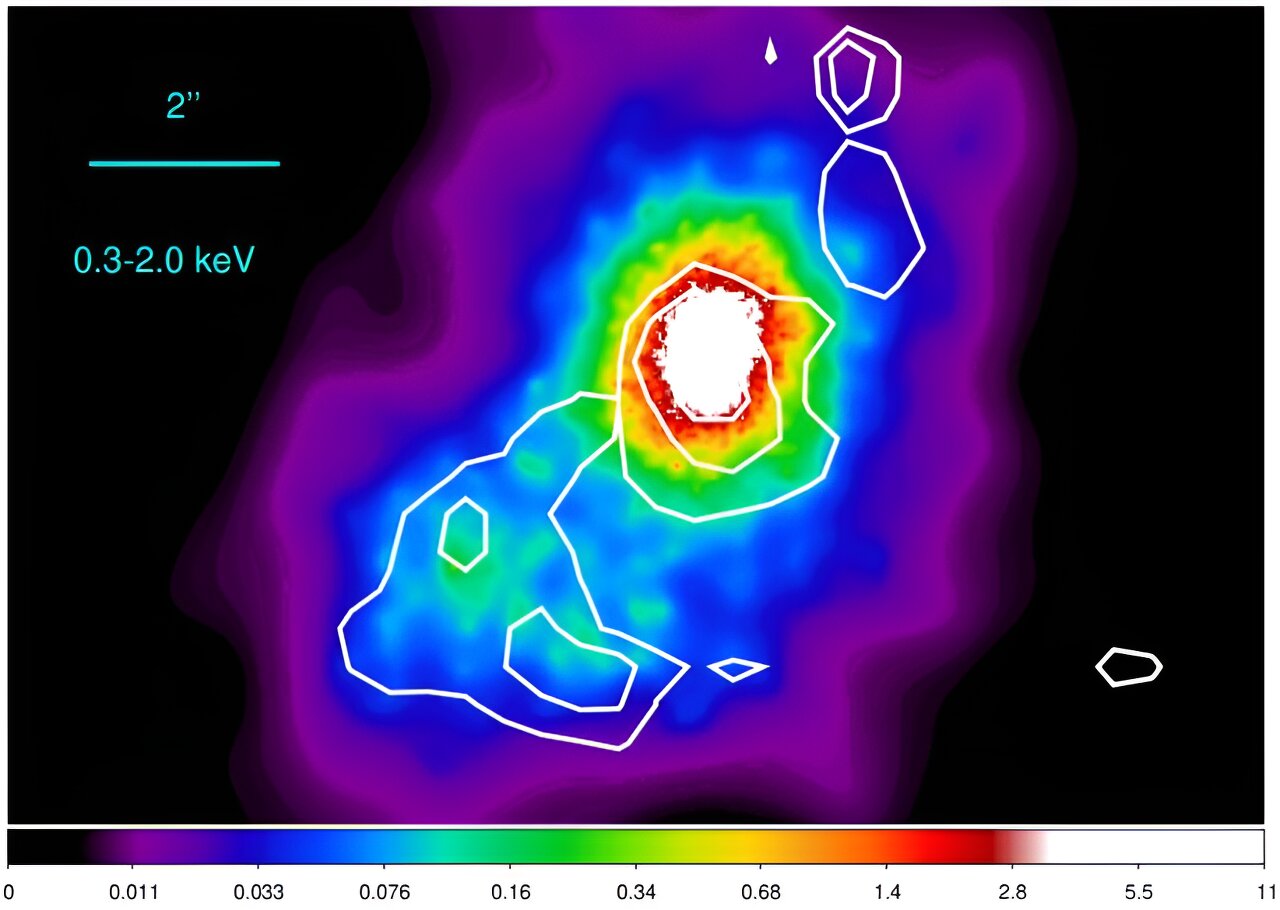Astronomers are using the Chandra telescope to study a nearby galaxy with an active core. Astronomers are using the Chandra telescope to study a nearby galaxy with an active nucleus. There they found unusual ionization cones and investigated how the luminosity of the central region has changed over the past thousand years.

Ionization cones of galaxies
The neighboring lenticular galaxy NGC 5252 contains extremely elongated cones of ionized material. Recent observations by an international team of astronomers have made it possible to study these amazing structures and obtain important information about their properties.
Ionization cones are streams of ionized material emanating from active galactic nucleus (AGNs). They reach sizes in the tens of thousands of light-years and are observed mainly in type II Seyfert galaxies. Studying these structures can help us better understand the interaction between AGN and the rest of the star system’s material.
One of the largest ionization cones in our part of the universe is located in NGC 5252—a type 1.9 Seyfert galaxy at a distance of about 329 million light-years from us. Preliminary observations of these formations in NGC 5252 have shown that they extend over 130,000 light-years in diameter and consist of several arcs bounded by a double cone surrounding the galactic nucleus.
New data on the ionization of galactic nuclei
Recently, a group of astronomers led by Chen Wang from Xiamen University in China took a closer look at these cones, examining them in X-rays. They used NASA’s Chandra X-ray observatory for this.
The observations made by Wang’s team revealed an external X-ray arc of cones reaching approximately 65,000 light-years from the nucleus of NGC 5252. In general, X-ray images show that the cone structures mainly follow the direction of the optical ionization cones in the southeastern and northwestern directions.
The Chandra data suggest that the observed elongated soft X-ray emission is due to photoionization, and the source of the cones is the active galactic nucleus NGC 5252. Moreover, it was found that with increasing distance from it, this parameter remains constant or decreases slightly.
Chandra’s observations also show that the estimated luminosity of NGC 5252’s nucleus was previously much higher than its current luminosity. Astronomers estimate that it could have decreased by about 98% in the last 64,000 years. They suggest that the reason for this change in brightness could be the merger of the galaxy with some insignificant object.
According to phys.org
Follow us on Twitter to get the most interesting space news in time
https://twitter.com/ust_magazin


